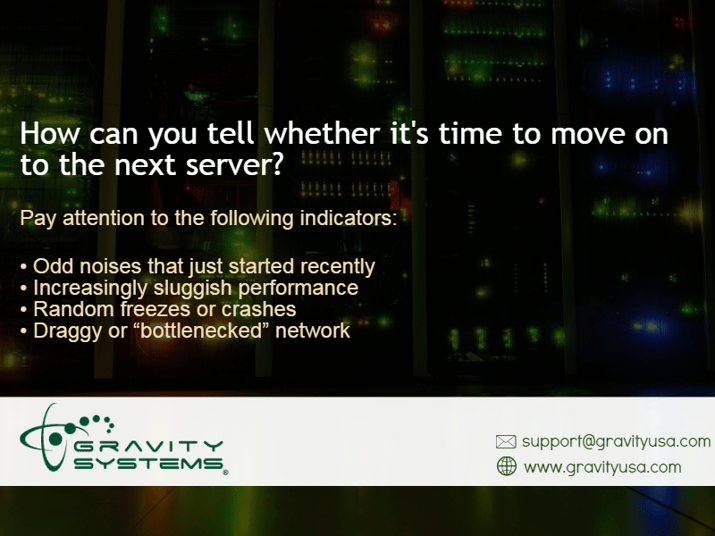
Your trusty server has been a good friend to your business these last few years, and it hurts to say goodbye to an old friend. But when that server finally gives up the ghost, you won't have time to mourn – you'll be too busy seeking business IT support in Austin because your entire operation just ground to a halt. So how can you avoid this ugly surprise by anticipating your aging server's eventual failure?
The actual lifespan of a server can vary pretty widely depending on hard it's been running, how well you've maintained it, even how much heat and dust it's had to contend with. An exceptionally pampered server might run for many years; generally speaking, though, it's safe to assume that the average server will run for 3 to 5 years before failing.
How can you tell whether it's time to move on to the next server? Pay attention to the following indicators:
- Odd noises that just started recently
- Increasingly sluggish performance
- Random freezes or crashes
- Draggy or “bottlenecked” network
Other things that may spur you to switch to a new server may include dwindling storage space and a warranty that has run out. You'll note that some of these factors may already be impairing your business's efficiency, so the sooner you upgrade the server, the sooner you'll enjoy renewed speed and productivity.

If you're concerned that your server may be near the end of its life, contact our Austin business IT support team at Gravity Systems. We can recommend a top-quality replacement that suits your needs and budget from among our leading vendor partners. After checking to make sure your data is backed up (of course), we'll have the new server installed and running perfectly before you can say “Goodbye, old friend – hello, new productivity!”
Related Post: Should Your Organization Switch to SSDs?

_NO_BCS_bigger_weird_green_clear.png?width=100&name=for-website_large(save-at-500-tall)_NO_BCS_bigger_weird_green_clear.png)


